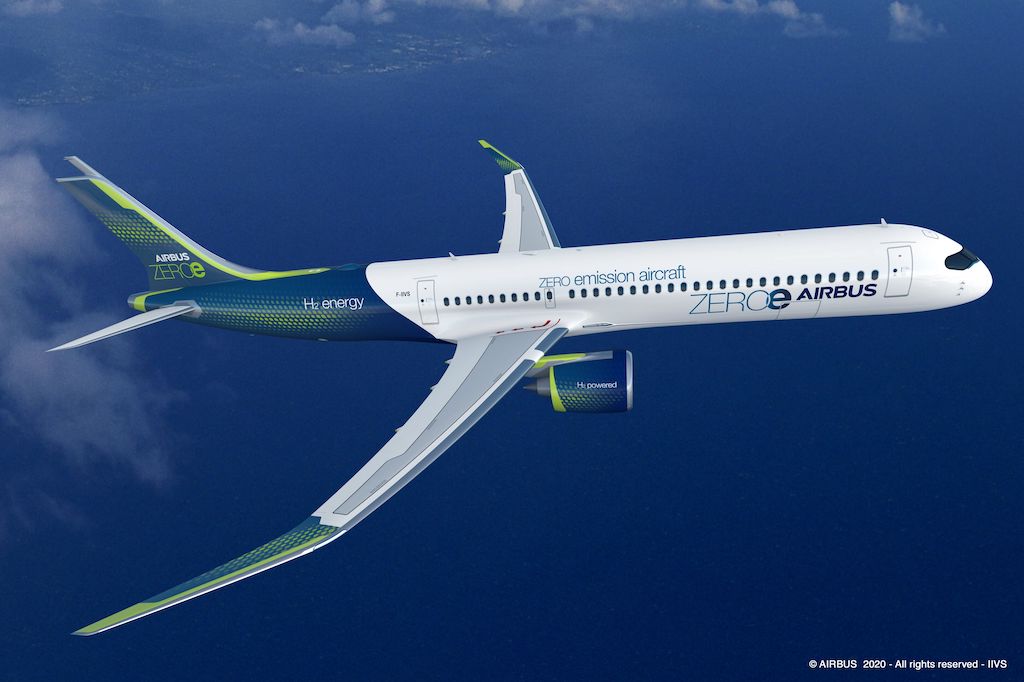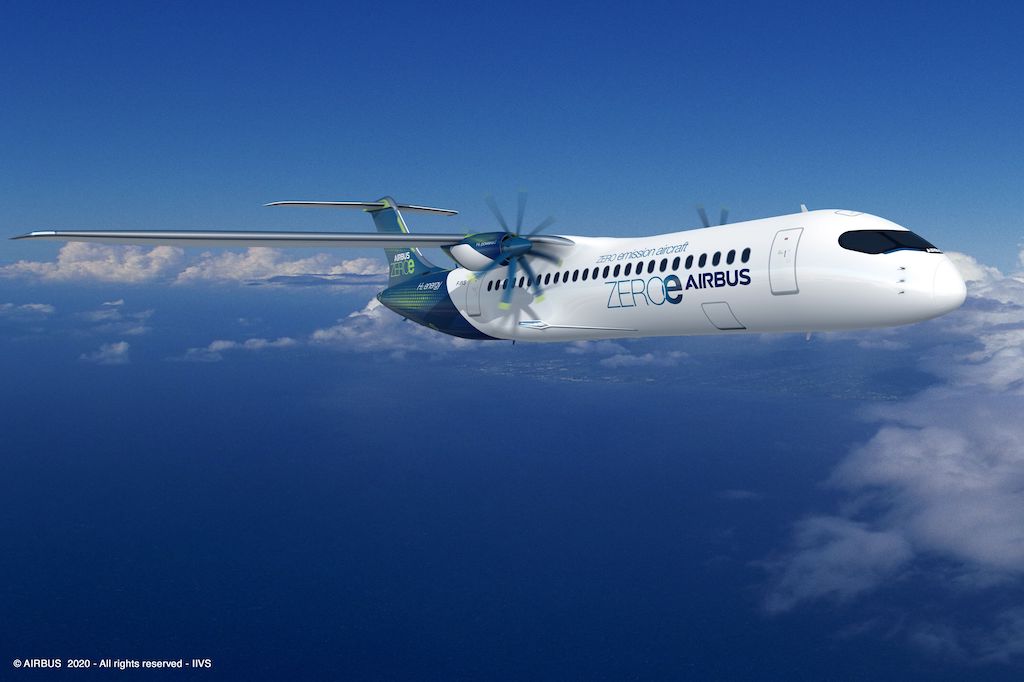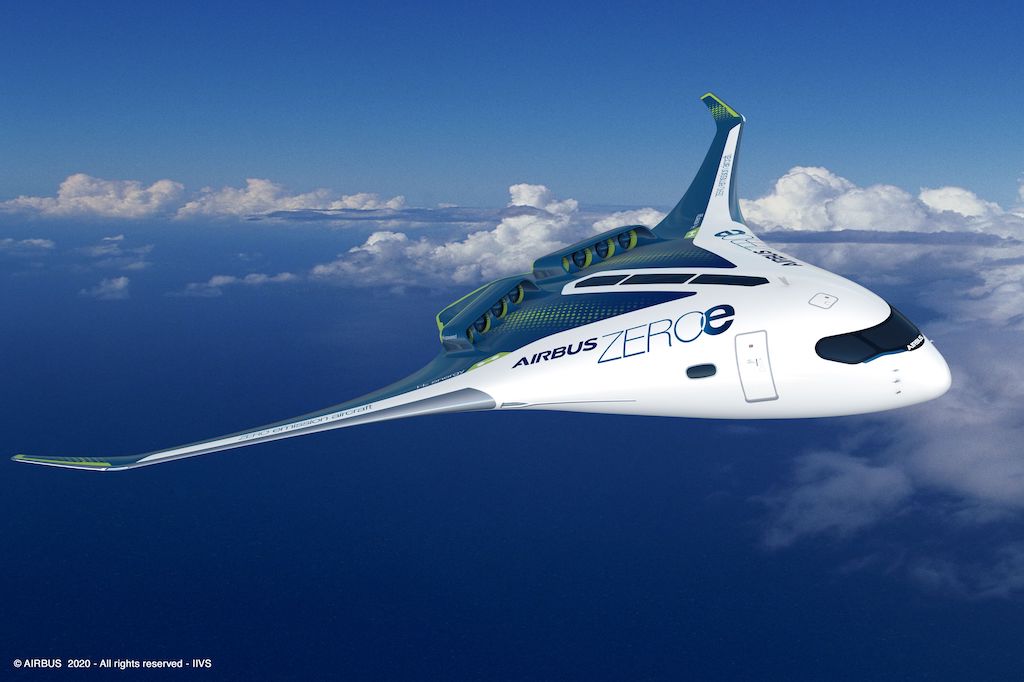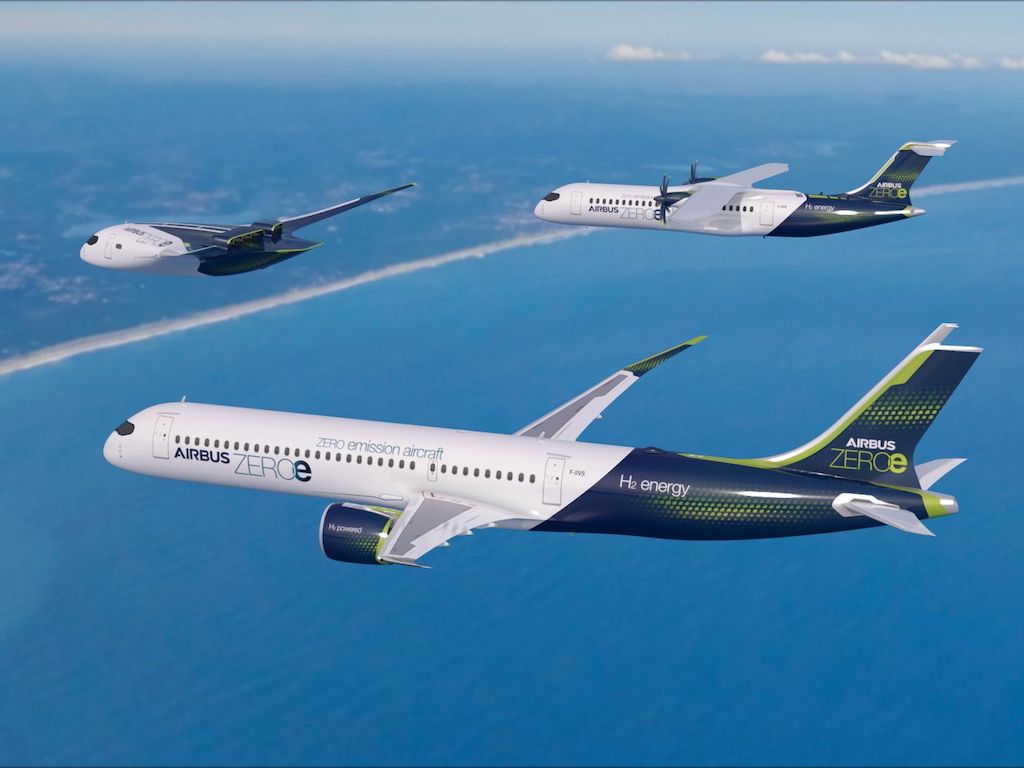3 Mins Read
European aircraft maker Airbus has revealed three new concepts for the world’s first zero-emission commercial planes, which the company believes can be rolled out within the next 15 years. Each design explores different technologies and configurations, but all rely on hydrogen as its primary source of clean aviation fuel, bringing the notoriously carbon-intensive industry a step closer to reducing its footprint.
Airbus has unveiled three of their new concepts that will enable net-zero commercial flights to take off by 2035 in its bid to become the leader in decarbonising the aviation industry. All three plane designs – dubbed “ZEROe”– use hydrogen as its power source, which the company says possesses “exceptional promise as a clean aviation fuel” to help the industry meet its climate neutral goals.

“I strongly believe that the use of hydrogen – both in synthetic fuels and as a primary power source for commercial aircraft – has the potential to significantly reduce aviation’s climate impact,” said Guillaume Faury, CEO of Airbus.
The first design is a turbofan, which can hold up to 200 passengers and is capable of operating transcontinentally. It runs on a modified gas-turbine engine and the liquid hydrogen fuel is stored and distributed in tanks placed behind the rear pressure bulkhead. Turboprop is the second concept with a 100 passenger capacity and can travel more than 1,000 nautical miles, making it a suitable option to replace planes flying short-haul routes.
I strongly believe that the use of hydrogen – both in synthetic fuels and as a primary power source for commercial aircraft – has the potential to significantly reduce aviation’s climate impact.
Guillaume Faury, CEO of Airbus

Finally, the blended-wing body design carries up to 200 passengers and the wings merge with the main aircraft body, and its wide fuselage means there are different ways that hydrogen can be stored and distributed across the plane, a key consideration for airlines in terms of cabin layout.
Describing the reveal as a “historic moment for the commercial aviation sector as a whole”, Faudry believes that Airbus’ new designs can “offer the world glimpse of our ambition to drive a bold vision for the future of zero-emission flight.”
The transition to hydrogen, as the primary power source for these concept planes, will require decisive action from the entire aviation ecosystem.
Guillaume Faury, CEO of Airbus

But net-zero plane innovation won’t be enough alone to transform the entire aviation industry. Hydrogen planes simply aren’t possible without significant hydrogen transportation and refuelling systems and infrastructure in place to support the technology and help it meet its day-to-day operational needs.
“The transition to hydrogen, as the primary power source for these concept planes, will require decisive action from the entire aviation ecosystem,” he added. “Together with the support from government and industrial partners we can rise up to this challenge to scale-up renewable energy and hydrogen for the sustainable future of the aviation industry.”
It’s going to take time for airlines to choose to retire their existing fleet of environmentally polluting aircrafts that run on jet fuel too. Some companies, such as U.S.-based Delta Air Lines, has even admitted that it’ll continue to use jet fuel for the foreseeable future despite pledging to go “fully carbon neutral” earlier this year.
All images courtesy of Airbus.




